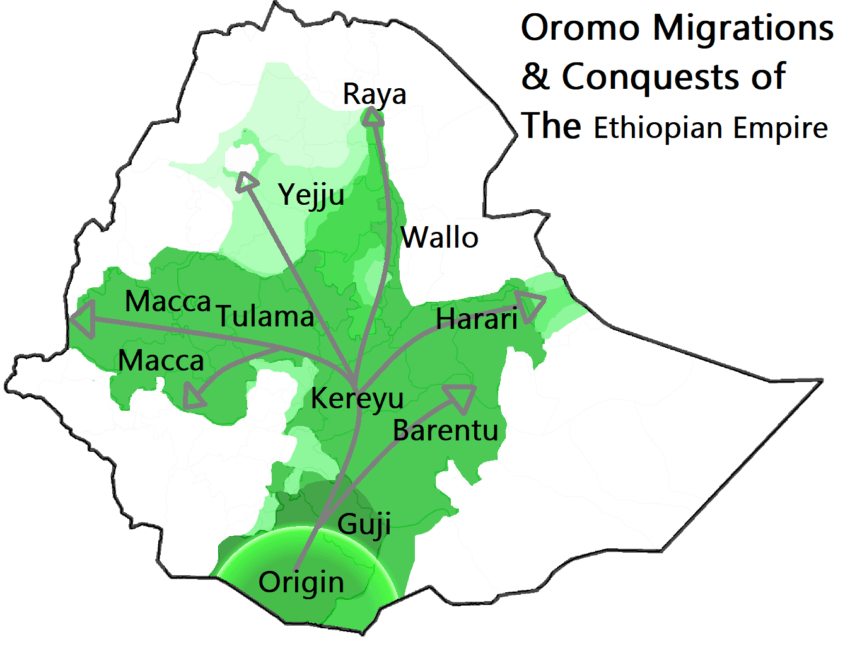The 16th century was a perilous time for the Christian kingdom. Following the Muslim invasions and the death of Imam Ahmed (Gragn), the southern part of the kingdom was weakened and devastated. The Oromos who were residing outside of the kingdom near the current day North Kenya were multiplying and outgrowing their grazing lands. Taking advantage of the power vacuum they started raiding and migrating Northward. The Oromos were a pastoralist people who had a governing system called Gedda. Unfortunately, because they did not have any written history before the 16th century, much is not known. Their raids, attacks, and invasions were recorded by an Orthodox monk named Abba Bahrey in his book “The News of Galla”. The migration took over 300 years accompanied by many waves of attacks and massacres. Those who survived the attacks were forced to assimilate into the Oromo culture, changing the kingdom’s ethnic scene permanently (Pankhurst 97).
In the current Ethiopian political landscape, there is a claim from the Oromo academia that the Oromo were the indigenous people of Ethiopia and were colonized and subjugated by the Amharas. Some claim that the Oromos are the true Cushitic people of the land and the Semitic Amharas are the outsiders who have taken their lands by force (EthnoMed).
In response to this claim, one must research the historical background in order to make an informed judgment. David Buxton and many other historians have stated repeatedly that the Oromos, previously known as “Gallas”, came to current-day Ethiopia after the 16th century through invasions and subjugation. For instance, Buxton wrote “It has already been said that the Gallas (Oromos) another Hamitic people were absent from Ethiopian territory in medieval times, though their ancestors must have been multiplying in what is now Somali country, south of the Gulf of Aden. In the sixteenth century, taking advantage of the universal chaos following the Moslem wars, the Gallas flooded into the southern marches of Ethiopia” (Buxton 28).
